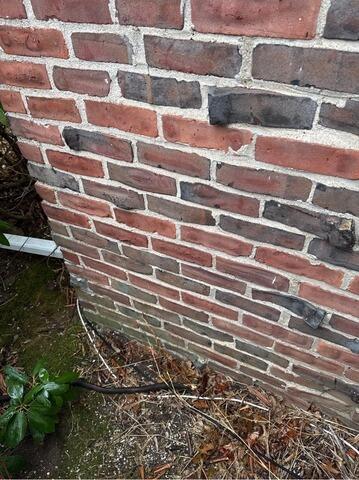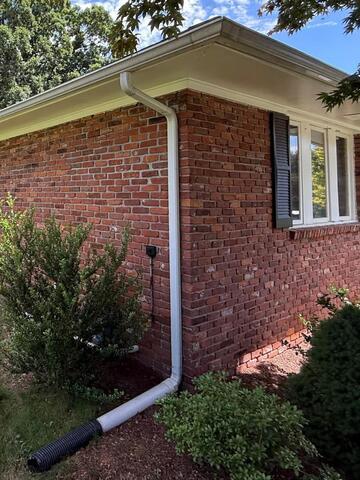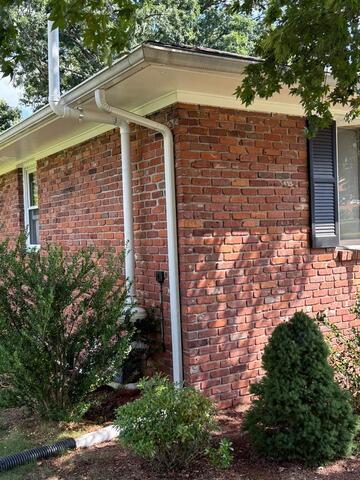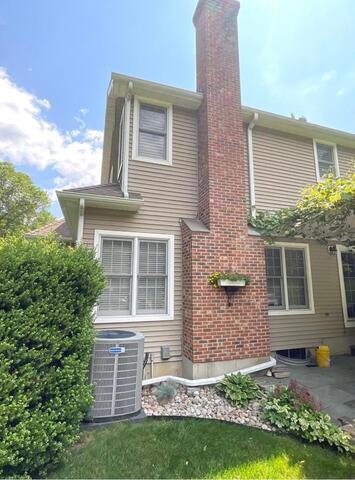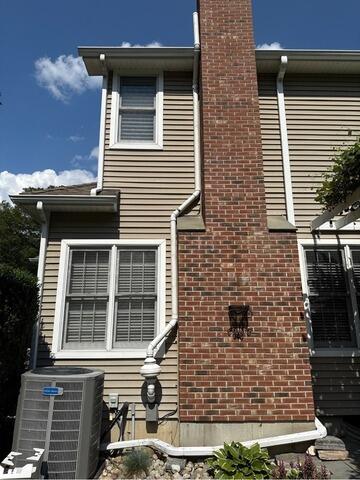Before & After Photos
Click on a photo to enlarge.
Installing a Radon Mitigation System in Holyoke, MA
This homeowner in Holyoke, MA called us hoping we would be able to help him with radon mitigation. We had already scheduled a project at his home to insulate his basement, and he wanted us to be able to add on a radon mitigation system as well. He had utilized a short term radon test kit, and his radon level came out to be 15 pCi/L. This is much higher than the EPA's recommended radon action level of 4 pCi/L. He stated that he wanted his radon exposure mitigated for his family's health.
We were able to help this customer. We installed a passive radon mitigation system in his home. Once the ideal space for the system was located, our radon mitigation technician was able to install it. He first started by drilling a hole into the concrete slab in the basement. Once the core had been removed, the radon technician installed a pipe and secured it. He also installed a manometer - which measures the pressure of the radon in the system. This is the indicator of whether or not the radon system is functioning correctly. He then drilled a hole for the exterior penetration and installed pipes for that as well. He then went to the outside of the home, installing the fan. The technician then sealed all cracks, gaps, and around the holes drilled for the system. After a quick test of the system, our radon technician was done and the homeowner was happy! Now he has a brand new mitigation system that will keep his radon levels low and his family more safe.
Installing a Radon Mitigation System in South Hadley, MA
This homeowner in South Hadley, MA called us hoping to talk about installing a radon mitigation system. He was considering buying a home, and he and his real estate agent were looking for information before the sale went through. The home had an average of 5 pCi/L, and went as high as 12 pCi/L at times. We were able to work to accommodate their needs.
We were able to help this customer. Once he purchased the home, we installed a radon mitigation system. We began by drilling the holes in the basement -- both in the concrete slab in the bottom and the hole for the exterior penetration. He then began installing the pipes and secured them inside the basement. He installed the manometer on the pipe on the inside of the home. The manometer measures the pressure of the radon in the system, indicating whether or not it is functioning correctly. After that, he went outside to build the rest of the system. He installed the fan on the outside of the home. Once the system was installed, he went back inside, sealing around all of the cracks and gaps in the basement. He also sealed all of the holes that had been drilled for the system. Now, this homeowner has a system designed to keep the radon levels in his home low!
Installing a Radon Mitigation System in East Hampton, CT
This homeowner in East Hampton, CT called us stating that he had high radon levels. When his home was tested, he had a radon level of 7 pCi/L on average. He had a long history of readings for his radon level that he wanted to review. He was the original owner of the home, as he had built it himself. He wanted his levels lowered so that he could feel more confident in his home.
We had the perfect solution for this customer! We installed a radon mitigation system in his home. We identified the specific space where the mitigation system should be installed. After that, we drilled a hole in the floor as well as a hole in the wall for the exterior penetration. We put together the pipes, starting in the floor, and built it out through the exterior penetration to the outside. We secured the pipes to the wall, and then installed the manometer onto the pipe. (A manometer measures the pressure of the radon gas in the system, indicating whether or not the system is functioning). We then went outside to continue building out the system. We installed the fan and continued building out the pipes, securing them to the outside of the home. Our technician then sealed around the holes that had been drilled for the system. Now, the homeowner has a brand new radon system for their home!
Installing a Radon Mitigation System in Wilbraham, MA
This homeowner in Wilbraham, MA called us while he was in the process of purchasing a home. They had tested the home for radon, and it came back to 4.5 pCi/L -- over the EPA's radon action level of 4 pCi/L. He was concerned about the health and safety of his family, and wanted to get it mitigated before they moved in.
We had the perfect solution for this customer! We installed a radon mitigation system in his home. We identified the specific space where the mitigation system should be installed. After that, we drilled a hole in the floor as well as a hole in the wall for the exterior penetration. We put together the pipes, starting in the floor, and built it out through the exterior penetration to the outside. We secured the pipes to the wall, and then installed the manometer onto the pipe. (A manometer measures the pressure of the radon gas in the system, indicating whether or not the system is functioning). We then went outside to continue building out the system. We installed the fan and continued building out the pipes, securing them to the outside of the home. Our technician then sealed around the holes that had been drilled for the system. Now, the homeowner has a brand new radon system for their new home!
Installing a Radon Mitigation Pipe in Wilbraham, MA
This homeowner in Wilbraham, MA called us after testing the home he was purchasing for radon. His radon level came back to be 4.5 pCi/L, which is higher than the EPA's radon action level of 4 pCi/L. He wanted to reduce his radon levels as much as possible for the health and safety of his family.
We were able to help this customer. We installed a radon mitigation system in his home. We identified a specific closet where the mitigation system would be best installed. We began by drilling the holes in the floor and the hole in the wall for the exterior penetration. We then began installing the pipes and secured them to the wall. The radon mitigation technician installed the manometer on the pipe on the inside of the home. The manometer measures the pressure of the radon in the system, indicating whether or not it is functioning correctly. After that, he went outside to build the rest of the system. He installed the fan on the outside of the home. He sealed around all of the holes that had been drilled for the system. Now, this homeowner has a radon mitigation system designed to keep their levels low!

